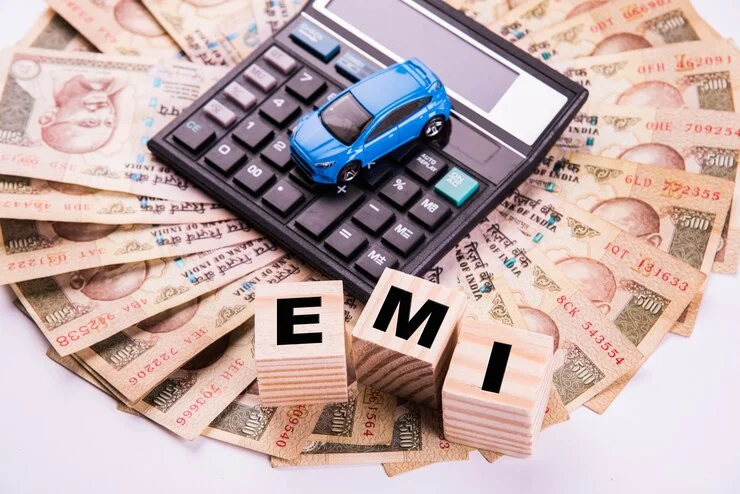Each month, borrowers have to pay a settled sum to the bank, called EMI (likened month to month installment). In spite of the fact that the concept is basic, choosing the right sort of EMI can altogether influence your funds in the long run. There are two common sorts of EMI alternatives accessible amid domestic credit disbursal. Perry EMI And Full EMI. It’s imperative to get it the distinction between the two—making the off-base choice can lead to superfluous budgetary stress.
In this article, we will investigate both Pre EMI and Full EMI In detail, covering their masters, cons, points of interest, and perfect utilize cases. By the conclusion, you will have a clear understanding of which EMI choice is best for your budgetary objectives and current circumstance.
During this period, you do not reduce the principal amount; you only pay interest on the loan to the bank. This period continues till you get possession of your home. During pre-EMI, your monthly payment is lower than full EMI, which is beneficial for those who want to relax their income or budget. are But this means your loan principal will not be reduced, and you may end up paying more total interest.
What is full EMI?
At this stage you pay the bank so much every month that your principal debt is gradually reduced. In this model, you repay the loan according to a fixed schedule, which allows you to easily plan your repayments. you can also control the total amount of interest and clear your loan faster. It is better for those who have a stable income and who want to repay the loan on time while understanding their financial responsibility.

Benefits of Pre-EMI
The biggest advantage of pre-EMI is that your monthly payment is lower. If you are in a new job or have limited income, this option gives you some relief. Paying rent and loan EMIs while building a house is difficult, but with pre-EMI you can manage your monthly budget. It is also good for people who want to invest their savings in something more important. Pre-EMI also provides flexibility, which you can convert to the future as per your income. This reduces stress during construction and allows you to focus on your financial goals.
Disadvantages of Pre-EMI
The biggest disadvantage of taking a is that your principal amount does not go down. If the construction of the house is delayed, you only have to pay interest for a long period of time, which turns out to be expensive for you. By delaying payments, you extend your loan tenure, which also increases the total interest. Hence, taking a pre-EMI without a plan can be a financial risk.
Full EMI of advantages
The biggest advantage of taking a full EMI is that you can pay off your loan sooner. The payments you make each month include both principal and interest, which gradually reduces your loan amount. Thus, you will have to pay a smaller amount on total interest. With full EMI, you maintain your financial discipline and make timely payments. This option is best for those who have a fixed income and want to build their home quickly. Apart from this, you can also get tax benefits for paying the full EMI, which reduces your financial burden.

Disadvantages of full EMI
The biggest challenge of taking a full EMI is that you have to pay more every month. If your income is not stable or you don’t have financial backup, it may be difficult to manage the full EMI. Initially your principal amount is high and the interest is also high, which can become a burden for you. If you are unable to cover emergency or unexpected expenses in your monthly budget, you may face financial stress. So, you should take a full EMI only when you are mentally and financially ready.
Comparison of pre-EMI and full EMI
In a full EMI, you repay both the principal and the interest, which clears the loan sooner and lowers the total interest. Pre-EMI provides flexibility, but the long-term cost is high. Full EMI may seem a bit expensive initially but gives more financial benefits. You should choose one of the two according to your income and loan repayment capacity.
When to take a pre-EMI?
If your house is still under construction and possession may be delayed, it is better to take a pre-EMI. If your income is still limited or you are in a new job, pre-EMI gives you short-term relief. It is difficult to pay rent and loan EMI simultaneously while building a house, so with the help of pre-EMI, you can manage your budget. This option is also good for those who are borrowing for property investment and do not want early possession. But you have to understand that pre-EMI is only a temporary solution, and you will have to switch to full EMI later.

When should I take the full EMI?
If you are financially stable and your home is ready, it is better to take full EMI. If you want to move into your home immediately, it is important to start the full EMI. If your income is stable and sufficient, a full EMI will help you save a lot of interest money in the long run. This option is best for those who have a strong financial plan and can make their payments on time. If you are disciplined, taking a full EMI will be most beneficial for you.
Conclusion
Buying a house is a big financial decision, in which understanding the EMI model is very important. Full EMI may seem difficult initially, but it clears your loan quickly and reduces the total interest. Every person’s financial situation and goals are different, so the EMI model should be chosen according to one’s ability and need. Before taking a loan, use an EMI calculator, seek expert advice, and accurately estimate your income and expenses. Your planning and understanding will make your homeownership dream easier and better.